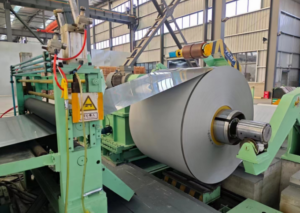Spring steel strips occupy a crucial position due to their exceptional elastic properties and durability in the world of metallurgy and materials engineering. These strips, also known as elastic strips or spring bands, find applications in a wide range of industries, including automotive, aerospace, machinery, and electronics. Understanding the different grades of spring steel strips is essential for ensuring the right material is selected for a given application.

Introduction to Spring Steel Strips
Spring steel strips are thin, elongated pieces of metal that exhibit high elasticity. They can be deformed significantly under stress and return to their original shape once the stress is removed. This property, known as elasticity, is crucial in various spring applications. Spring steel strips are typically made from high-carbon steel alloys, which provide the necessary strength and durability.
Classification of Spring Steel Strip Grades
The grades of spring steel strips are typically classified based on their chemical composition, mechanical properties, and intended applications. Different grades are designed to meet specific requirements in terms of strength, ductility, fatigue resistance, and corrosion resistance.
1. Carbon Content and Alloying Elements
The carbon content of spring steel strips plays a significant role in determining their mechanical properties. Higher carbon content leads to increased strength and hardness but may reduce ductility. Alloying elements such as chromium, manganese, silicon, and nickel are also added to the steel to modify its properties. For example, chromium increases corrosion resistance, while manganese improves hardenability.
2. Mechanical Properties
The mechanical properties of spring steel strips are critical in determining their suitability for a particular application. These properties include yield strength, ultimate tensile strength, elongation, and fatigue resistance. Yield strength refers to the stress at which the material begins to deform plastically. Ultimate tensile strength is the maximum stress that the material can withstand before fracturing. Elongation measures the ductility of the material, while fatigue resistance indicates its ability to withstand repeated stress cycles without failure.
3. Common Grades of Spring Steel Strips
a. Low-Carbon Spring Steel Strips
Low-carbon spring steel strips, typically containing less than 0.25% carbon, are known for their good ductility and formability. They are commonly used in applications where high flexibility and low stress are required, such as in springs for small appliances and toys. However, their relatively low strength limits their use in high-stress applications.
b. Medium-Carbon Spring Steel Strips
Medium-carbon spring steel strips, with a carbon content of approximately 0.25% to 0.60%, offer a balance between strength and ductility. They are widely used in automotive and machinery applications, where springs need to withstand moderate stress levels while maintaining good fatigue resistance.
c. High-Carbon Spring Steel Strips
High-carbon spring steel strips, containing more than 0.60% carbon, exhibit high strength and hardness but reduced ductility. They are commonly used in applications requiring high stress resistance, such as heavy-duty industrial springs and suspension systems. The reduced ductility makes them more susceptible to brittle fracture, so careful handling and heat treatment are essential.
d. Alloy Spring Steel Strips
Alloy spring steel strips are those that contain additional alloying elements such as chromium, manganese, silicon, and nickel. These elements are added to modify the steel’s properties, improving its corrosion resistance, hardenability, and fatigue resistance. Alloy spring steel strips are often used in applications requiring enhanced performance, such as in aerospace and high-performance automotive components.
e. Stainless Spring Steel Strips
Stainless spring steel strips are made from stainless steel alloys, primarily containing chromium and nickel. They are renowned for their excellent corrosion resistance and are commonly used in applications exposed to harsh environments, such as marine and chemical processing equipment. However, stainless steel springs tend to have lower strength compared to traditional carbon steel springs.
Conclusion
In conclusion, the grades of spring steel strips are diverse, offering a range of properties to meet the needs of various applications. From low-carbon strips suitable for small, low-stress springs to high-carbon and alloy steel strips for demanding industrial applications, the choice of material is crucial for ensuring the performance and reliability of spring components.
Thank you for reading our article and we hope it can help you to have a better understanding of the grades of spring steel strips. If you are looking for spring steel strip suppliers and manufacturers online now, we would advise you to visit Sino Special Metal.
As a leading supplier of spring steel from Shanghai China, Sino Special Metal offers customers high-quality spring steel products at a very competitive price.




